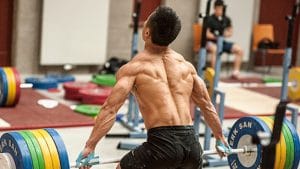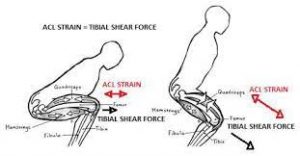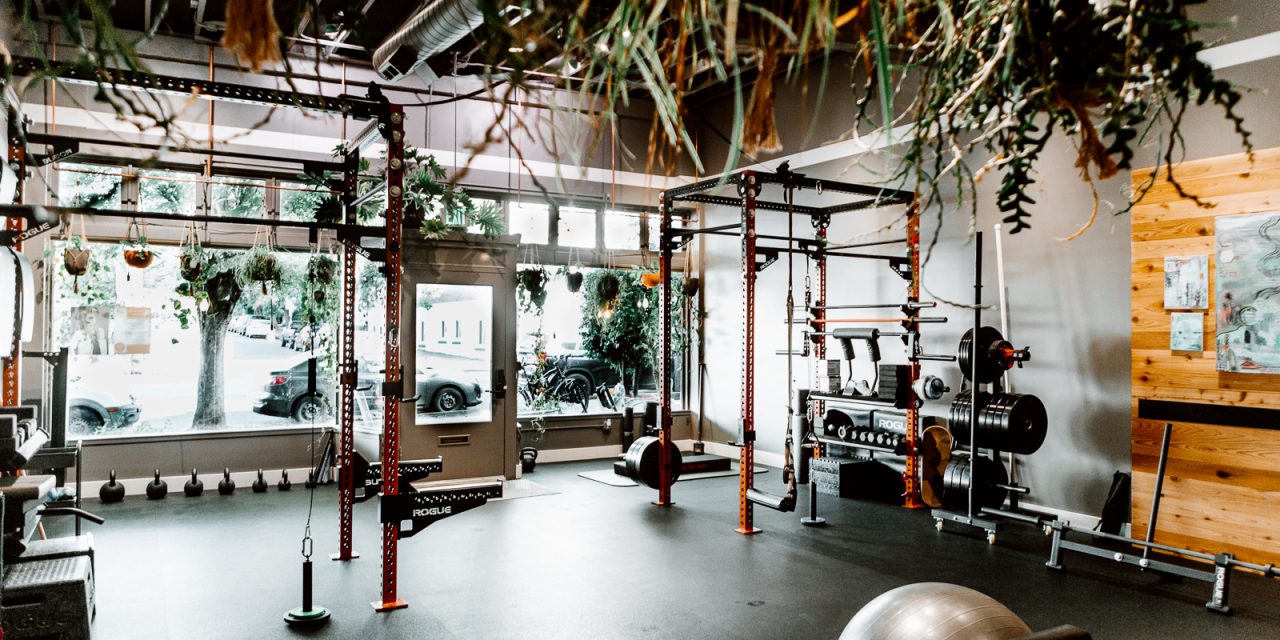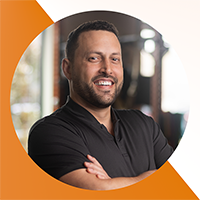We have written extensively on the neurological component of chronic pain. There is now a continual stream of evidence supporting the neuroadaptive process of chronic pain and the importance of educating patients in that process. We feel that there is a large missing intervention in all of these studies and patients and we believe the system at Move Better fills that void.
The Biomechanical Cycle of Low Back Pain
We do believe that the start of any chronic pain cycle is a true injury, either within a single moment or acquired over thousands of cycles. Many of our patients can clearly and specifically recreate their initial injury even though it was decades ago. This level of detail is not an accident and highlights how engrained this memory is to their pain. Ask these same patients what they had for breakfast a week ago and we only get blank stares. Ask what position they were in when they hurt their back and they can show us right away. Unlike most chronic pain research, we can actually see why this cycle of pain has continued in a very real mechanical way to encourage the cycle of over-protection that occurs in chronic pain. We can see the neurological support (“I have a weak back”) of chronic pain but we also see a pattern of movement that keeps injuring that site of pain. This analysis of pattern is missing in research and this is one of our major goals as a clinic. Make clinicians evaluate movement pattern and we have even made our own system to do so.
The Start of Chronic Low Back Pain
In our experience, low back injuries rarely happen due to significant loads or traumas. We have had countless parents hurt their back lifting up their small (less than 45 lbs) child. We have had even more talk to us about a simple bending over to tie their shoes or pick up their keys create excruciating pain in their low back (these are actual stories we have been told by patients repeatedly). By far, the most common root of low back pain is not even known. It just happened slowly over time and never went away. There was no single moment or instance where things just went wrong. On the flip side, we rarely see low back pain start with a high load traumatic event. Almost zero patients coming in have a story of lifting a truly heavy object or experiencing a traumatic impact. The small exception to this is patients that were in a motor vehicle accident, but even then that is a small percentage of people who have chronic symptoms from an automobile accident. We must, however, admit a population bias. People with traumatic injuries likely go to a hospital versus a chiropractic clinic. We also have treated somewhere in the thousands and not in the tens of thousands. We are also only in the Pacific Northwest. With that said, it is fair to say that chronic low back pain can start with a traumatic event AND without a traumatic event.
The Typical Presentation of Low Back Pain
We believe we are the best place to treat chronic pain because we evaluate how you think AND how you move. Our Foundational Movement System shows some glaring trends in how people with low back pain move, either in a chronic or acute state. I would like to counter an early argument right away, that being that the way people are moving is in response to pain. One counterpoint is that tissue damage is usually resolved in our patients because the injury has happened a very long time ago. Relative tissue integrity is restored in a matter of weeks and months and certainly does not take a decade to restore. So while a change in pattern may have helped initially to protect damaged tissue (which is usually NOT evident even when evaluated on imaging) that need ended a long time ago. Second, and most powerful, is that changing how people move is exactly what gets our patients out of chronic pain. We are replacing an unsuccessful pattern (pain) with a successful pattern (not pain). By changing how we move we give the body an option to stop creating pain.
Movement Faults in Chronic Low Back Pain
There are two major movement faults we see with chronic low back pain. At their root, they are two compensations that create the same problem, inability to load large muscle mass.
Problem 1: Bending Starts at the Spine
We have a long list of reasons we include Hinging as on of our Foundational Movements, chronic low back pain is the top of the list. Patients with chronic low back pain almost always present with spinal motion occurring first when they initiate any pattern that brings them closer to the ground. Our most common test is picking up something light or sitting into a chair. The most common pattern we see is the spine moving into extension which increases the natural curve of your low back. This also primes the low back muscles to do most of the work. The problem is, low back muscles are not that big. Relative to the muscles of the hips and thighs, the low back muscles will always be smaller, even is a well developed person. On the left you have the back of Lu Xiaojun, a chinese olympic weightlifter and someone with one of the biggest low back muscles on the planet. On the right you have the thighs of Pyrros Dimas, a previous multiple world record olympic lifter and owner of massive thigh and hip muscles. Of note is that these two athletes are actually very close in size.


It is easy to see that hips and thighs easily outpace the low back muscles in terms of sheer mass. They are large because they are meant to generate a tremendous amount of force. The low back is small because it is meant to transfer all of that force. By bending at the spine first we reverse that scenario, the low back is generating force and the thighs are transferring force. The correct pattern is easily seen in this slow motion video. In the lateral view it is easy to see that the spine simply does not move from the start of the movement but the hips and legs do.
For almost the entirety of this movement, the low back is not a moving part. What we see in most of our patients is that the low back contracts immediately, which looks like this (credit to Barbell Logic for this video):
The low back should not flex or extend during most lifts, including picking your keys up off the ground or sitting in a chair. For a high percentage of people and scenarios, the lumbar spine should remain still. There are some scenarios where it should move but we would say most of those scenarios are sport or lift specific and do not apply to normal human life. What is really most important is that your low back should have the option not to move. In chronic low back pain patients, there are close to 0% of the patients come to Move Better that are able to sit to a chair without moving their low back. We can avoid the conversation of what is right or wrong all together by testing options. Our job is easily described as:
“Evaluating what your not good at and make you better at it.”
Most people are already very very good at moving their spine to lift or sit. Most people are very very bad at not moving their spine to lift or sit. You should be able to both easily. Most of the time you should not move your spine to lift or sit. When we teach people how to not move their spine when they lift or sit, they stop having pain.
Pattern 2: Knees Bend First
Equally dangerous, and often occurring simultaneously as low back motion, is initiating motion at the knees. For the same reasons above, loading the knees will not be successful. Humans do not have big knees. When we exercise, our knees to not grow. The knee is only tendon, ligament, and cartilage. Just like the low back, it is meant to be a transfer point. It delivers energy from the hips to the ground with much larger muscles above and below taking load. The image below does a great job of showing the physics of initiating from the knees. The only thing stopping the thigh (femur) from sliding off the lower leg (tibia) is the ACL (ligament in the knee).

This also creates significant load to the back. In our next writing we will discuss the details of why these patterns are a problem as we dive deeper into the mechanics of how to pick stuff up.




